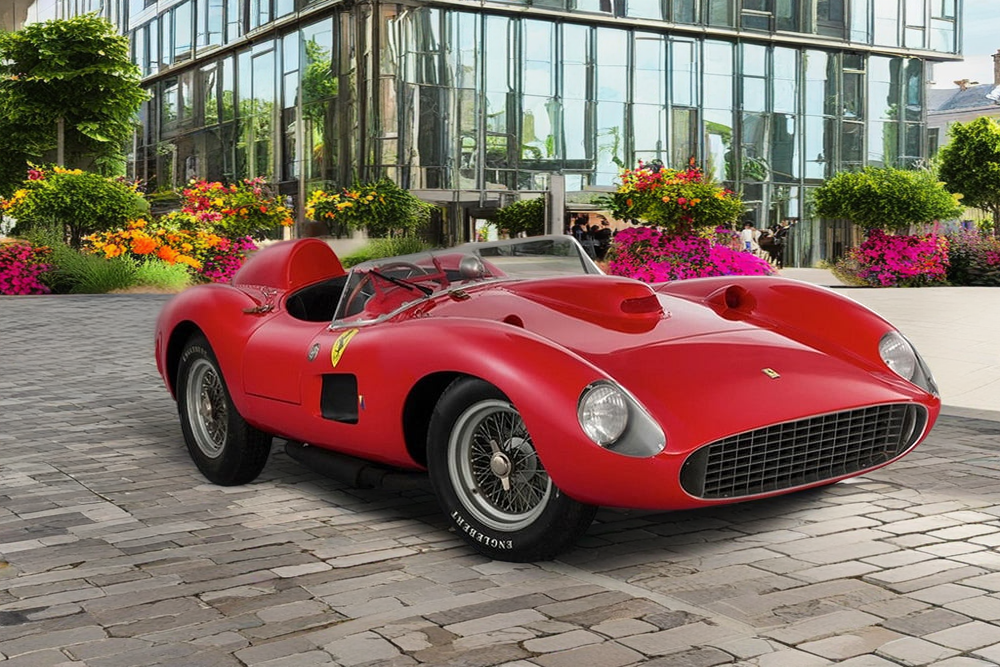The Ferrari 335 S: A Testament to Engineering Excellence and Racing Heritage
November 10, 2024

In the world of iconic automobiles, few names evoke as much passion and nostalgia as Ferrari. The prancing horse, synonymous with speed, luxury, and a rich heritage, has produced a multitude of remarkable vehicles since its inception. Among these, the Ferrari 335 S stands as a shining example of the brand’s commitment to innovation, performance, and an illustrious racing history. This blog post will delve into the design, engineering, racing pedigree, and legacy of the Ferrari 335 S, illustrating why it continues to captivate enthusiasts and collectors alike.
The Birth of the Ferrari 335 S
Introduced in 1957, the Ferrari 335 S was designed to compete in the demanding sport of sports car racing.
It was a direct continuation of the 315 S model, which was a direct result of Enzo Ferrari’s efforts to redefine the limits of engineering capabilities and performance in the post-war racing scene.
Ferrari’s objective with the 335 S was to preserve its competitive edge in competitions that emphasize technological innovation, agility, and speed.
The designation “335” refers to the engine’s displacement, indicating a flashy 3.4-liter V12 engine. This strong engine, which showed Ferrari’s skill for making high-output designs, was made to work reliably and could produce an amazing 390 horsepower. The engine was paired with a four-speed manual transmission in a way that made driving interesting and tested even the most experienced drivers.
Innovative Design and Engineering

The Ferrari 335 S stood out for having agile handling and lightweight construction, both of which were crucial for racing success. Its construction was based on a tubular steel chassis, which not only reduced weight but also improved rigidity. The use of aluminum in the construction of the car’s body further improved its low weight and aerodynamically effective shapes.
Aerodynamics, a consideration often overlooked in the 1950s, played a significant role in the design of the 335 S. Improved traction and stability at high speeds were made possible by the bodywork’s delicate curves and contours, which were designed to minimize drag while preserving high levels of downforce. The result was a car that not only looked stunning but also performed exceptionally on the racetrack.
One of the most noteworthy aspects of the 335 S was its unique suspension system. The suspension’s double-wishbone front and live axle rear design improved handling and ride quality, crucial for endurance racing. Ferrari’s attention to mechanical systems and structural integrity showed its commitment to building a racing-ready vehicle.
Racing Pedigree: Achievements and Legacy
The Ferrari 335 S quickly established itself on the racing circuit, making a significant mark in prestigious events and competitions. The car debuted at the 1957 Mille Miglia, when it proved its mettle on Italy’s winding roads. The 335 S, driven by Juan Manuel Fangio and Phil Hill, dominated the field and won races.

The 1958 season saw the 335 S win the 24 Hours of Le Mans and the World Sportscar Championship, its greatest racing victory. Mike Hawthorn’s performance in key races confirmed the 335 S’s reputation as a contender. These triumphs not only highlighted the car’s engineering excellence but also solidified Ferrari’s legacy as a powerhouse in automotive racing.
However, the success of the 335 S was not without controversy. The car found itself at the center of intense rivalries, particularly with its competitors from Maserati and Aston Martin. The spirit of competition that characterizes motorsport today was cemented by these rivalries, which drove improvements in racing technology and encouraged manufacturers to push limits and develop further.
The End of an Era
The evolution of the racing landscape ultimately marked the twilight years of the 335 S. When new technology and rules emerged in the early 1960s, Ferrari shifted its attention to producing new models like the 250 GTO. The 335 S’s impact on Ferrari sports car design has been substantial, and it will continue to be so even after this change.
The Ferrari 335 S has evolved from a historical artifact to a highly prized collector’s item. Auctions featuring the 335 S frequently attract enthusiasts and investors willing to pay premium prices for a piece of automotive history. Given its rarity and illustrious past, the 335 S is usually regarded as one of the most prestigious models in the Ferrari lineup.
Conclusion
The Ferrari 335 S epitomizes the marriage of artistic design and cutting-edge engineering. Every element of the car, from its strong V12 engine to its beautifully designed chassis, embodies Ferrari’s reputation for excellence. The fact that the 335 S did well in races shows how capable, skilled, and dedicated its drivers were. The Ferrari 335 S is still a race car icon, telling us of a time when speed, style, and motorsport defined an era in the history of cars. It continues to inspire new generations of car fans and collectors.
It is imperative to recognize the complex combination of innovation, craftsmanship, and passion that is required to create a Ferrari in the contemporary era, as we contemplate the legacy of the 335 S. The 335 S stands not only as a piece of machinery but as a vibrant chapter in the ongoing story of automotive excellence.